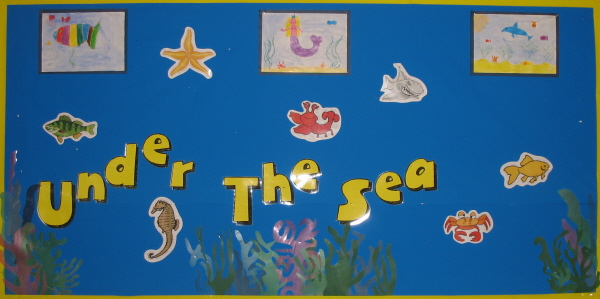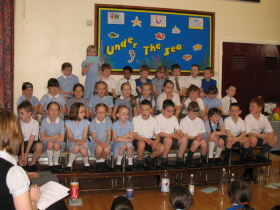 |
Miss Sprawson's class chose to use their class assembly to tell us all about life
'Under the Sea'.
3S Class Assembly |
|
|
|
Friday 25th April 2008 |
|
Miss Sprawson's class chose to use their class assembly to tell us all about life 'Under the Sea'. |
|
 |
Dolphins The wonderful thing about dolphins |
Did you know...? Dolphins only sleep with one half of their brain at a time! The other half stays awake to tell the body when to breathe. Unlike humans, dolphins have to think to breathe. |
Jellyfish The jellyfish just loves to jiggle, |
 |
Did you know...? A jellyfish has no head, brain, heart, eyes, ears or bones. They do have tentacles that contain poisonous, stinging cells. When the tentacles brush against prey , thousands of tiny stinging cells explode, launching poison into the victim. |
 |
Stingray At the bottom of the ocean |
Turtles We crawl up the beach from the water |
 |
 |
Sharks I swim with a grin up to greet you |
Did you know...? Sharks never run out of teeth. If one is lost, another spins forward from the rows and rows of backup teeth. A shark may grow and use over 20,000 teeth in its lifetime! |
Blue Whale There's no other beast on the planet |
 |
Did you know...? Scientists are really worried that the number of whales and other sea creatures is getting smaller and smaller, as they are starting to die out, and some of this could be our fault! |
We need to be careful what we do with our litter, and make sure it doesn't end up in the sea where fish and other sea creatures can get hurt. Everybody can make a difference by doing simple things - like putting rubbish in the bin, or taking it home and recycling it. |